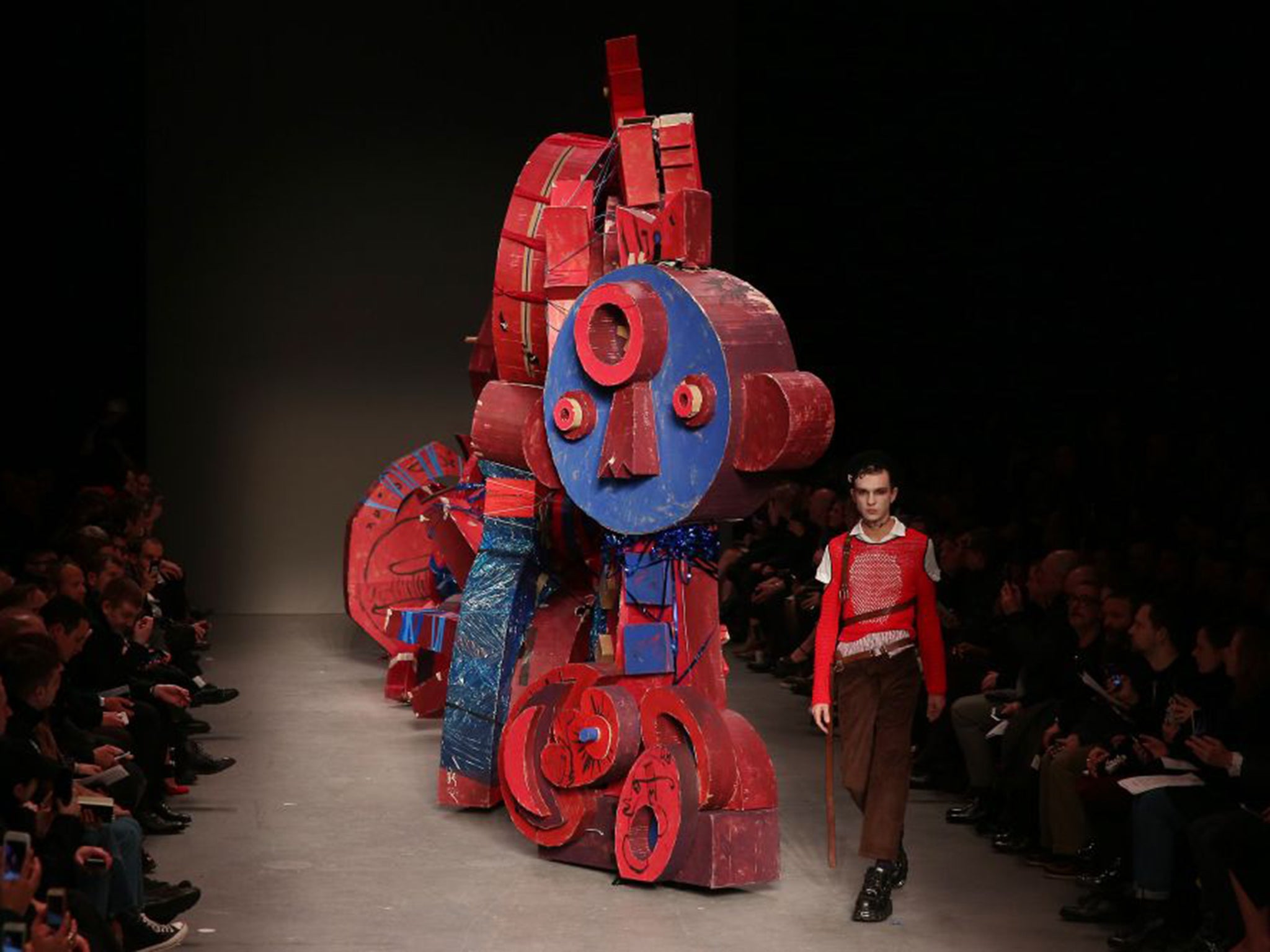London’s latest menswear shows have funked-up big names and emboldened fresh faces
But Britain's capital has its own preconceptions to battle with

The start of a new year always brings with it a period of reflection: invariably celebrating the past or choosing to make peace with it is an important part of planning for the future. That sense of contemplation came through loud and clear at London Collections: Men, the first fashion outing of the year which is currently under way, which showcases designs for autumn/winter 2016.
That’s hardly unusual though. Fashion might ostensibly be all about the new and the next, but designers spend a fair amount of time mining the past in order to define the future. The death of André Courrèges last week at the age of 92 has been a timely reminder of just how long the legacy of a truly forward-thinking designer can be.
Stuart Vevers, the executive creative director of Coach, is one designer who is able to tap into the here and now, keep an eye on the past and still look to the future with remarkable ease. That ease comes through in the garments he creates, which this season featured plenty of oversized and heavy-duty outerwear, including pillowy, down-filled parkas in hazard yellow – inspired by the sort of practical clothing that a freezing winter in New York necessitates.
There are no overworked ideas or tortured concepts here. Motifs of spaceships and dinosaurs further reinforced extreme notions of future and past in a lighthearted way. But there were more recent references than the Jurassic era too – namely the early days of hip hop in 1970s New York: “That time has a spirit of optimism and rebellion against the status quo,” says Vevers, drawing parallels with the work he has undertaken at Coach since his appointment in 2013.
“A lot of what I’m doing is quite unexpected from America’s original house of leather.
“My job was to change Coach and I often have to remind people of that.”
As part of his overhaul, Vevers brought the brand’s menswear offering to London, bolstering it last January by introducing ready to wear to what was previously just an accessories line. “There was something about taking Coach completely out of its context which I think has helped as part of the reset. If you change the context then maybe people are a bit more open-minded about changing their preconceptions of a brand.”
London has its own preconceptions to battle with: often seen as the underdog of the four main fashion cities, to categorise it as lightweight would be to pay it a disservice. The presence of big brands such as Coach – or Alexander McQueen and Burberry which show today and tomorrow respectively – is key to getting international bums on seats; but there is plenty of emerging and enlightening talent to be seen too.
Craig Green has been shouldering a heavy burden as the future of London menswear since he made his debut for autumn/winter 2013. But he handles the pressure remarkably well and it was cheering to see the evolution his work has undergone. There were still Green signatures – straps and ties and obscured faces – but he worked with a more accessible silhouette, albeit handled with an exceptional touch.
More experimental were swathes of leather laced together with ties of thick cotton and panels of padded washed silk in khaki and rust, effortlessly buttoned, or rather unbuttoned, around the body.
Showing as part of the Fashion East Man line-up, Charles Jeffrey presented a collection that exuded Blitz spirit – not that of wartime London but the Eighties club of the same name that took New Romanticism as its starting point to became synonymous with getting dressing up in experimental style.
Tailoring was oversized, twisted and tied to the body, cable knits were cut and pasted, and Jeffrey embraced gender fluidity in a way that was wholly unforced.
This was his first catwalk collection and already there’s a buzz about what he’ll do next.
Subscribe to Independent Premium to bookmark this article
Want to bookmark your favourite articles and stories to read or reference later? Start your Independent Premium subscription today.

Join our commenting forum
Join thought-provoking conversations, follow other Independent readers and see their replies